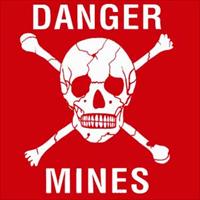MAURITANIA: Donor funds needed to clear landmines

Some 400 km north of Nouakchott at the border with Western Sahara is the village of Boulanouar. Only the passing of trains transporting minerals out of the desert region disturb the peace and quiet of the cattle herders there. But beneath the sand lie deadly land mines, relics of a brutal desert war over the Western Sahara territory in the 1970s.
“Since the war with the Saharawis we have lived with the problem of mines,” said Hamoud Mohamed, a local government official in Boulanouar. “Of the 7,000 people in the commune, at least a dozen are handicapped. They lead their lives with difficulty.”
According to mapping conducted by the United Nations Development Programme (UNDP) in conjunction with the newly formed national demining agency, at least 60 communities in Mauritania are affected by mines.
The biggest mine fields are around the towns Nouadhibou and Bir Mohgrein, said Jim Sawatsky, a UNDP advisor to the demining project.
“If we include the 65 areas where we also suspect there are mines, we reach a total affected area of around 76 km²,” he said.
The mines are left over from a war in the 1970s between the Polisario Front against the Morrocan and Mauritanian governments in a battle for control of the Western Sahara region to Mauritania’s north.
In 2000, Mauritania ratified the Ottawa Convention which bans the production, storage and use of anti-personnel mines.
“This signature prompted the authorities to put in place a national programme on the subject,” said Alioune ould Mohamed el Hacene, coordinator of the UNDP demining programme.
All the mines in Mauritania could be removed by 2011, officials say, but to achieve that donors are going to have to contribute. “We hope to raise US$14 million,” Hacene said. “The Mauritanian state has already pledged to provide 20 percent of this amount.”
According to the national demining programme, the money will be used to complete a broader investigation on the ground, to buy the materials required to extract and secure mines and to train Mauritanian soldiers as mine clearers.
The project will also include continued training for local teachers in affected areas to educate school children and communities about the dangers and how to recognise mines.
“The herders are well informed today,” said Hacene. “They do not go into the zoned areas. Their animals might, but they do not.”
 Back and Next - Back and Next
Back and Next - Back and Next See Also - See Also
See Also - See Also